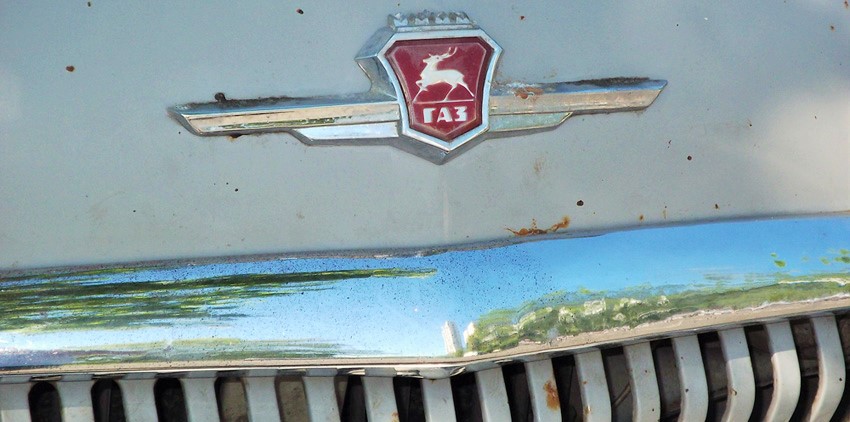Thursday, November 30, 2017
Lexus RX 200t with That Turn Signal
The RX 200t is a four-cylinder gasoline turbocharged 8AR-FTS engine version of the RX 450h.
Tuesday, November 28, 2017
Pobeda in first snow
Another Pobeda sighted, here's a Third Series Pobeda M-20 car, first produced in 1945 or 46.
This is the No. 2 Third Series Pobeda on this blog.
This is the No. 2 Third Series Pobeda on this blog.
Monday, November 27, 2017
Land Rover Series III
here is an early Land Rover installed as advertisement for an extreme hobbies store or something here in Moscow.
It's likely a Series III Land Rover.
Saturday, November 25, 2017
Tuesday, November 21, 2017
Tuesday, November 14, 2017
JPN TAXI by Toyota
This isn't a car sighting post but an auto news post.
Taxis is one of my interest, so here's some taxi related news not a month old.
The press release goes like this (quoting):
Taxis is one of my interest, so here's some taxi related news not a month old.
On October 23, 2017 Toyota launched a new dedicated taxi vehicle, the JPN TAXI, where "JPN" stands for Japan and "TAXI" stands for, you guessed it, taxi.
The press release goes like this (quoting):
Toyota City, Japan, October 23, 2017―Toyota Motor Corporation (Toyota) launched a new taxi vehicle, the "JPN Taxi." The new model became available today at Toyota and Toyopet dealers nationwide.
The JPN Taxi embodies the spirit of Japanese hospitality. It was developed to provide usability and comfort to a wide range of people, including children, seniors, wheelchair users, and visitors to Japan from abroad. Toyota aims to change Japan's landscape, develop barrier-free cities, and transform Japan into a tourist-oriented country by promoting the widespread use of its JPN Taxis.
The new model showcases a people-friendly, universal design that provides usability and comfort to a wide range of people through continual innovations and improvements, from grab handles to the overall vehicle structure. Design features include a low, flat floor, making it easy for customers to ingress and egress from the taxi, a wide-opening, power rear sliding door (left side only) and space to accommodate wheelchair users3.
In addition, the taxi is designed to beautifully complement the cityscape while at the same time being easily recognizable as a taxi. This is achieved in part due to the car's styling, which aims to transcend trends and serve as a timeless classic model, as well as the body's deep indigo (koiai) tone, a traditional color that has long been a symbol of Japan.
Furthermore, this model offers the driver an optimal range of vision, in part through innovations to the position and shape of the pillars and the use of fender mirrors. As a design priority for this taxi model, functionality was improved by positioning the dashboard instruments and other devices in the taxi to allow easy access, including the placement of the GPS system and taxi meter in a spot that is easy for customers to see.
Environmental performance and power performance were both taken to new levels. By employing a newly developed liquefied petroleum gas (LPG) hybrid system, the new model offers 19.4 km/L4 fuel economy and sharply reduced CO2 emissions. Enhancements were made to safety equipment, including adding the Toyota Safety Sense C package and six SRS airbags as standard features.
Toyota began its venture into the taxi industry in Japan in 1936 with the introduction of the Toyota Model AA. In 1953, Toyota released the Toyopet Super RH model and other vehicles, which have become fixtures helping transport many people over the years. Toyota taxis have and will continue to travel greater distances than the average vehicle and be used in the toughest road conditions. This could be considered the starting point for automobiles that pursue a vision of ideal automotive development.
Toyota looks forward to exhibiting its JPN Taxi at the 45th Tokyo Motor Show 2017, and also plans to use the taxi to greet visitors from around the world in 2020, when Tokyo hosts the Olympic and Paralympic Games.
Sunday, November 12, 2017
500 SEL
Here is a 500 SEL sighted last summer (2017).
No idea if everything is original on this one (think not).
The letters SEL denote a long-wheelbase variant.
500 signifies 5L engines.
According to the wikipedia entry linked to above, the 500 SEL was in production 1980 through 1991.
No idea if everything is original on this one (think not).
The 500 SEL is one of the models in the lineup of the Mercedes-Benz W126, an S-class automobile.
The letters SEL denote a long-wheelbase variant.
500 signifies 5L engines.
According to the wikipedia entry linked to above, the 500 SEL was in production 1980 through 1991.
A very small number of 500 SELs were converted into something known as the "1000 SEL" by specialist tuning and coach-building companies mainly for (one or two) customers in the Middle East.
Tuesday, November 7, 2017
Subscribe to:
Posts (Atom)














